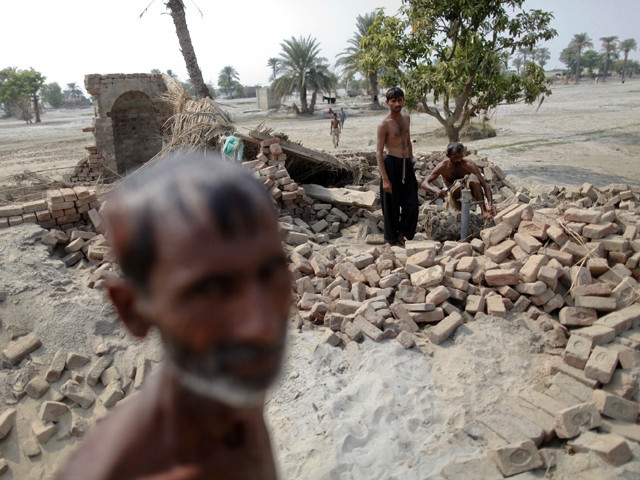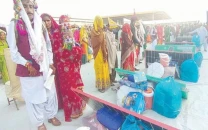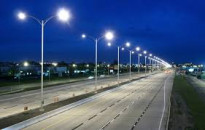Becoming stronger: Tori Bund now 6 feet higher, 30 feet wider
Floodwater still standing on the outskirts of Kandhkot, Karampur and Ghouspur.

Tori Bund — the embankment that caused the worst destruction in last year’s flash floods — has been made stronger and will now be six feet taller and 30 feet wider.
It was previously 17 feet high and 20 feet wide but still gave way to pressure in last year’s floods. The authorities are hoping the improved dyke will be able to withstand the upcoming monsoons. It is estimated that the stronger Tori bund can withstand up to 1.5 million cusecs, said Amjad Jatoi, the Begari Sindh Feeder Division executive engineer.
An inspection of the site revealed that nearly 90 per cent of the repairs have been completed. The workers were building a stone pitching apron to further strengthen the bund. Jatoi was confident that the remaining work there and at other bunds will be completed by June 30.
A large number of residents were also huddled near the construction site. They explained that they visit the bund every day to observe the quality of the repairs, since they are the ones who suffer in case a breach develops.
A landlord, Yakoob Nandvani, told The Express Tribune that for him Tori Bund was the most important bund of all. “You saw that it wreaked havoc throughout Sindh last year and, this year, we are expecting more water to come,” he said. Another landlord, Suhbat Jaffery agreed that the bunds need to be stronger than before.
Some of the villagers were, however, of the view that work at the Kashmore-Kandhkot bund is not being done up to the standard and it might give in to the pressure of water. Resident Ghulam Mustafa Nandvani said that earlier the water was eroding the embankment and they were afraid it might give in but the stone pitching has made the dyke stronger.
Engineer Jatoi explained that when the water level is low, the pressure is high and it erodes the embankments, but when the level rises, it stops the erosion. “It is a natural phenomenon.”
Explaining the delay in repairs, he said that the engineers could not start working on the site before March 15 because the earth was very muddy and slippery. It did not allow heavy machines to move. “The repairs would have been completed by May 17 but, since we started late, the funds were also released late,” he said.
A walk around the Kashmore-Kandhkot bund near Badani, Karampur, Ghouspur, Khanpur and Thul showed that all the main roads have been restored to some extent. The link roads, leading to small towns and village, are, however, still missing.
The residents of many flood-affected villages, such as Kandhkot, Badani, Khanpur, Thull, Karampur and Ghouspur, are still living like nomads. They felt said that it is the indifferent attitude of the government that has delayed the repairs of infrastructure. Unfortunately, the outskirts of Kandhkot, Karampur and Ghouspur still have floodwater.
The elected representatives have not only ignored the residents in their time of need but they have hoarded the relief goods that the government and the NGOs distributed, a resident complained. When the donations arrived, these elected representatives unloaded trucks full of dry ration, tents, utensils, seed and fertiliser in their godowns, he added. The construction of houses in Karampur and Ghouspur is also being carried out at snail’s pace. The residents said that the work started as late as January.
Published in The Express Tribune, June 7th, 2011.



















COMMENTS
Comments are moderated and generally will be posted if they are on-topic and not abusive.
For more information, please see our Comments FAQ